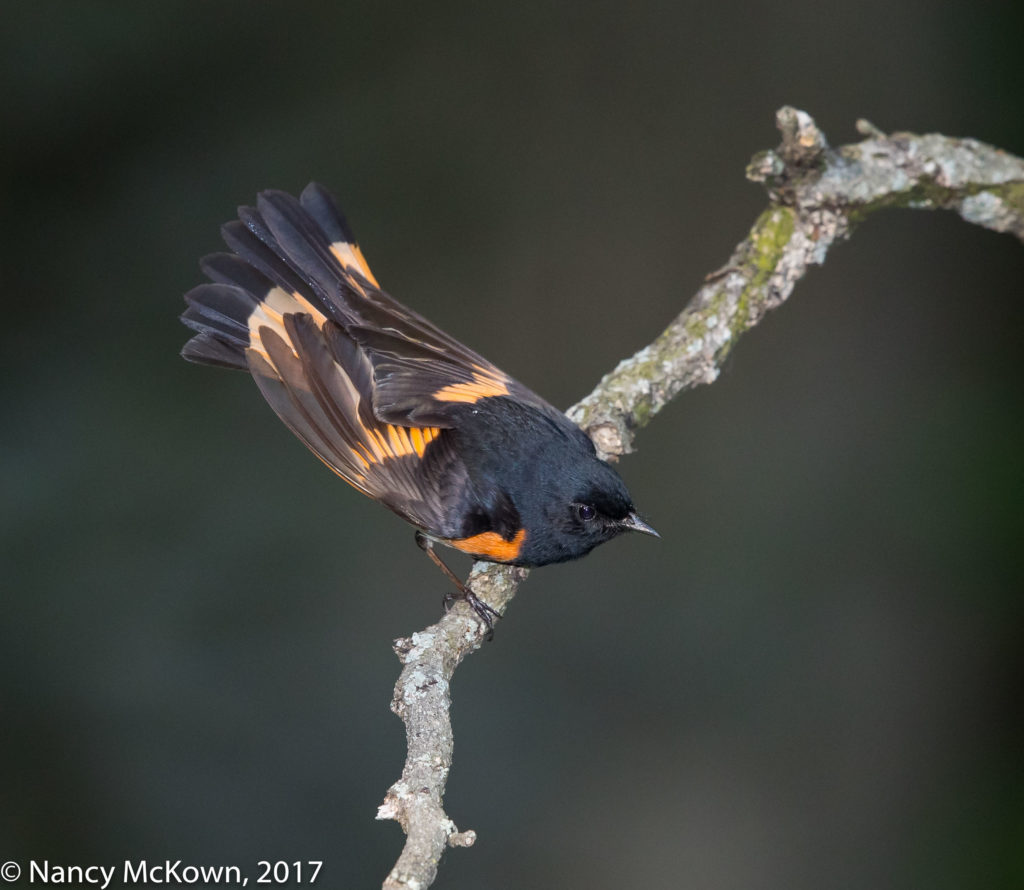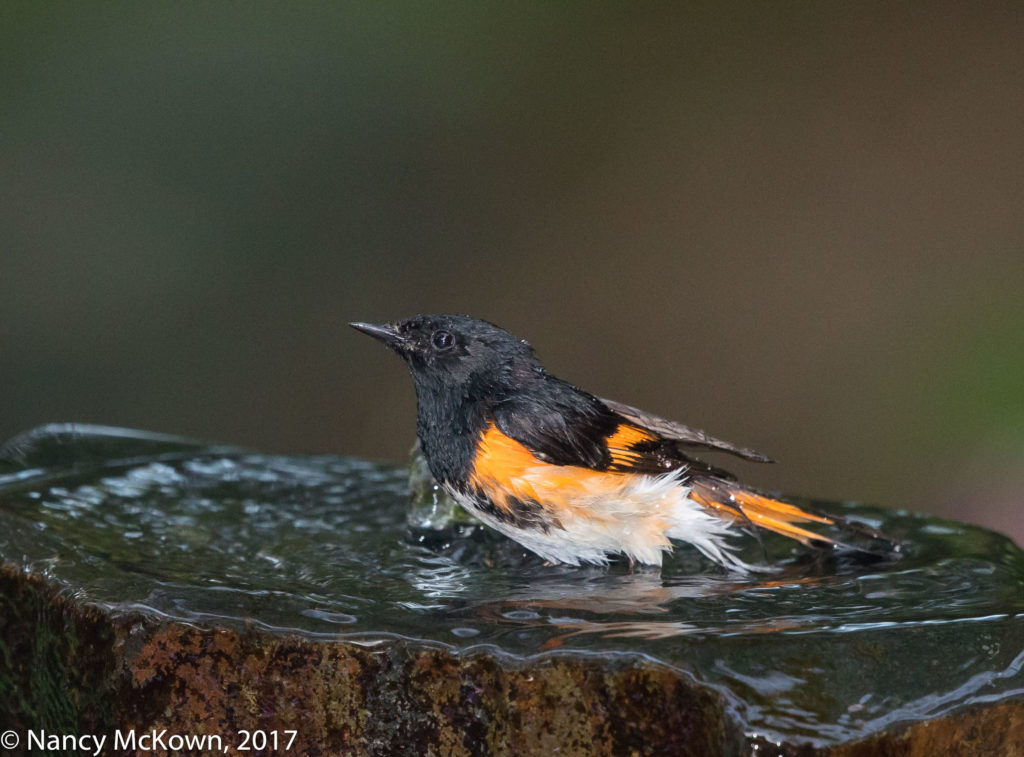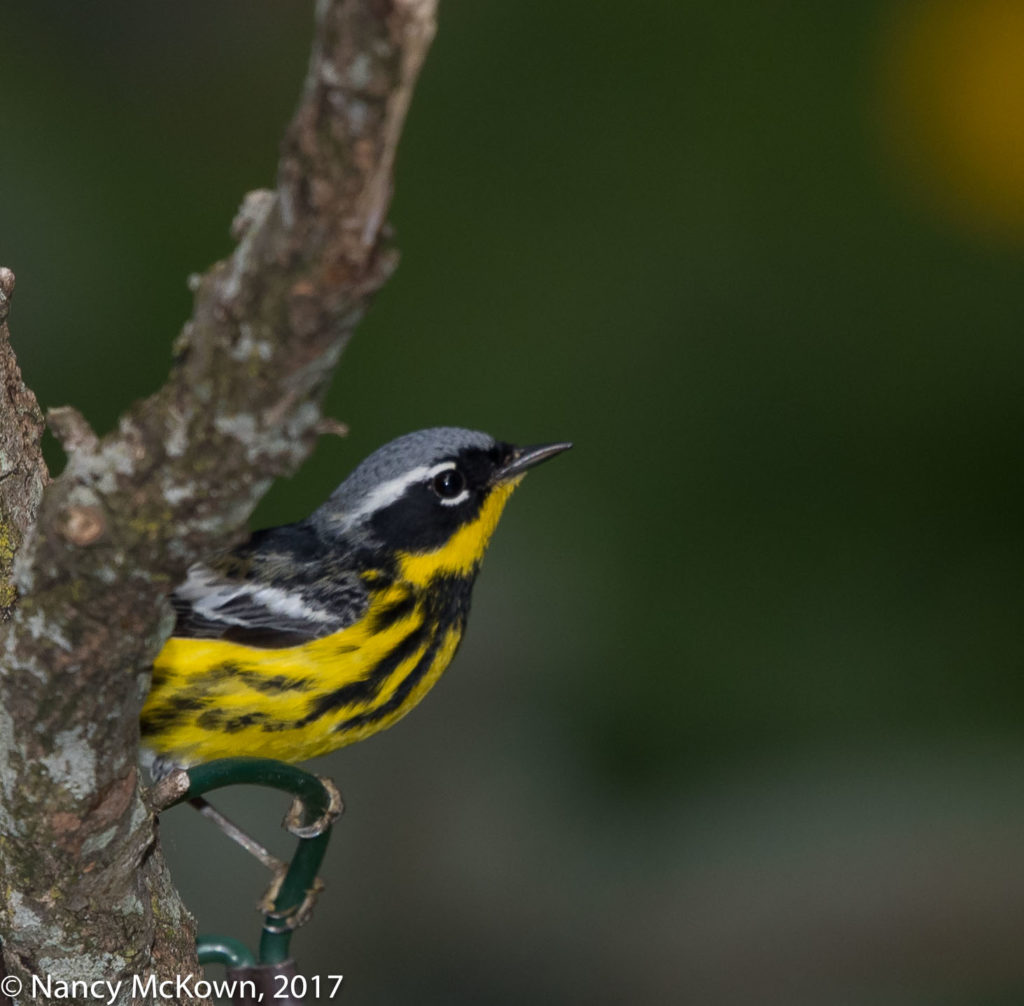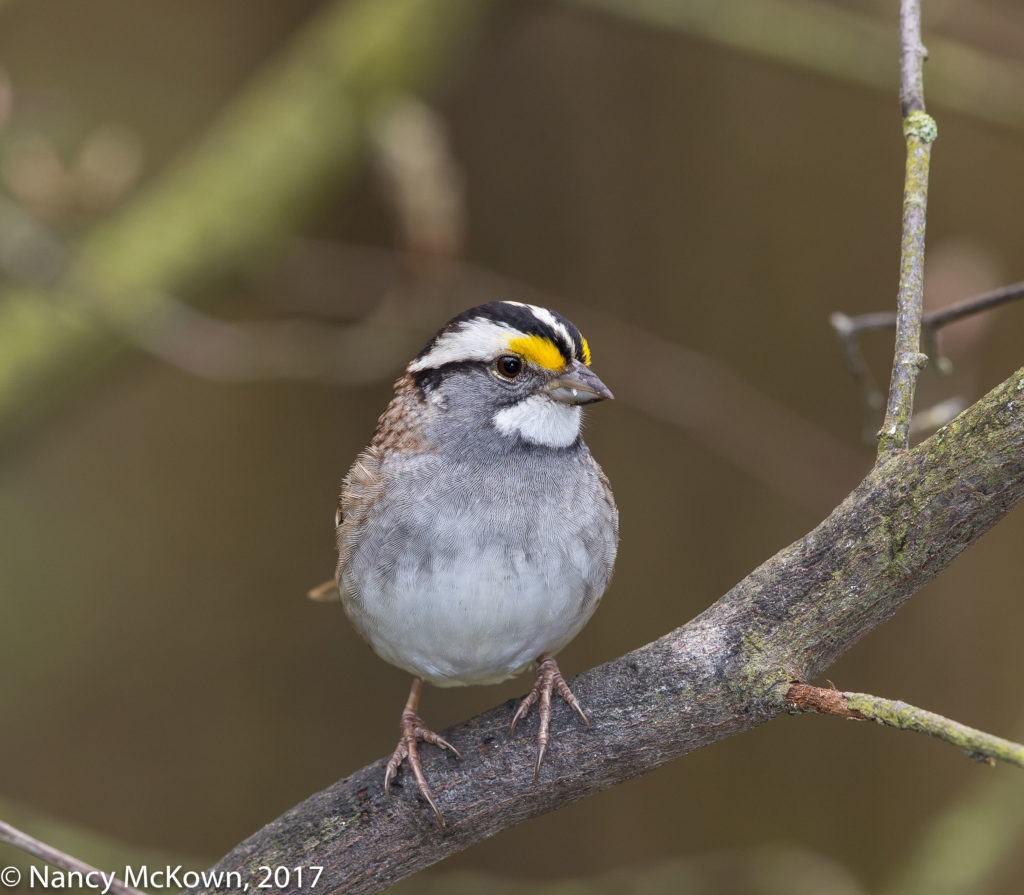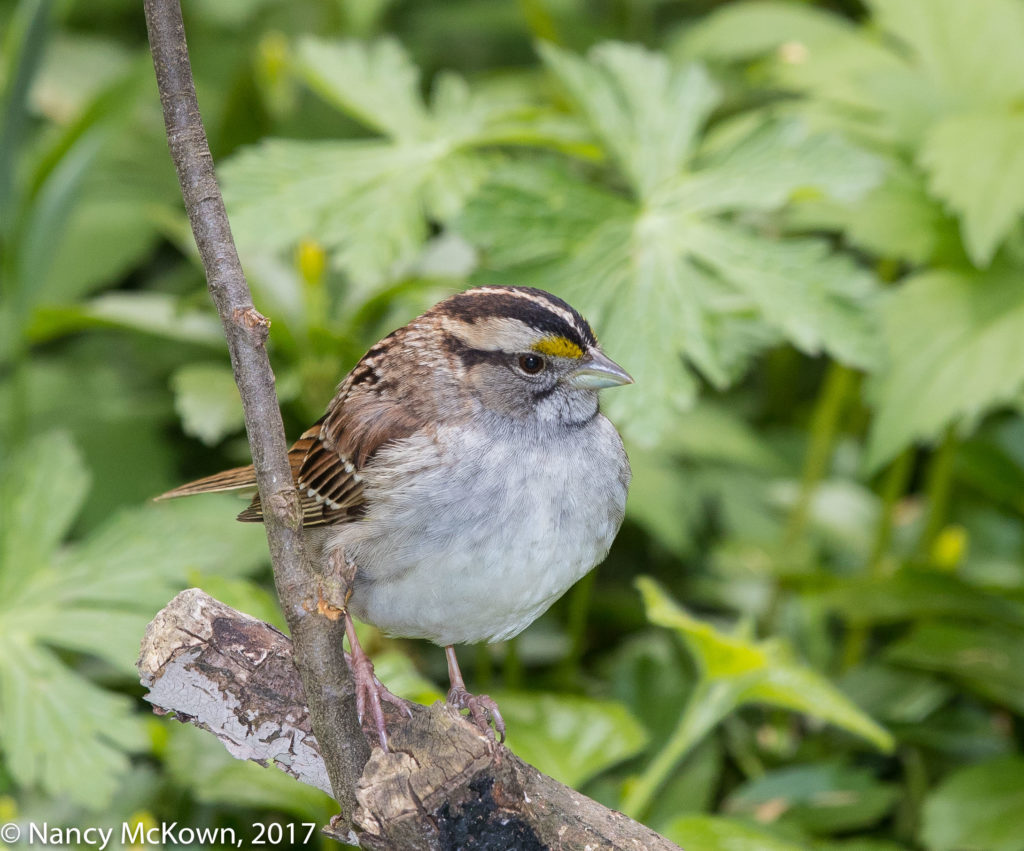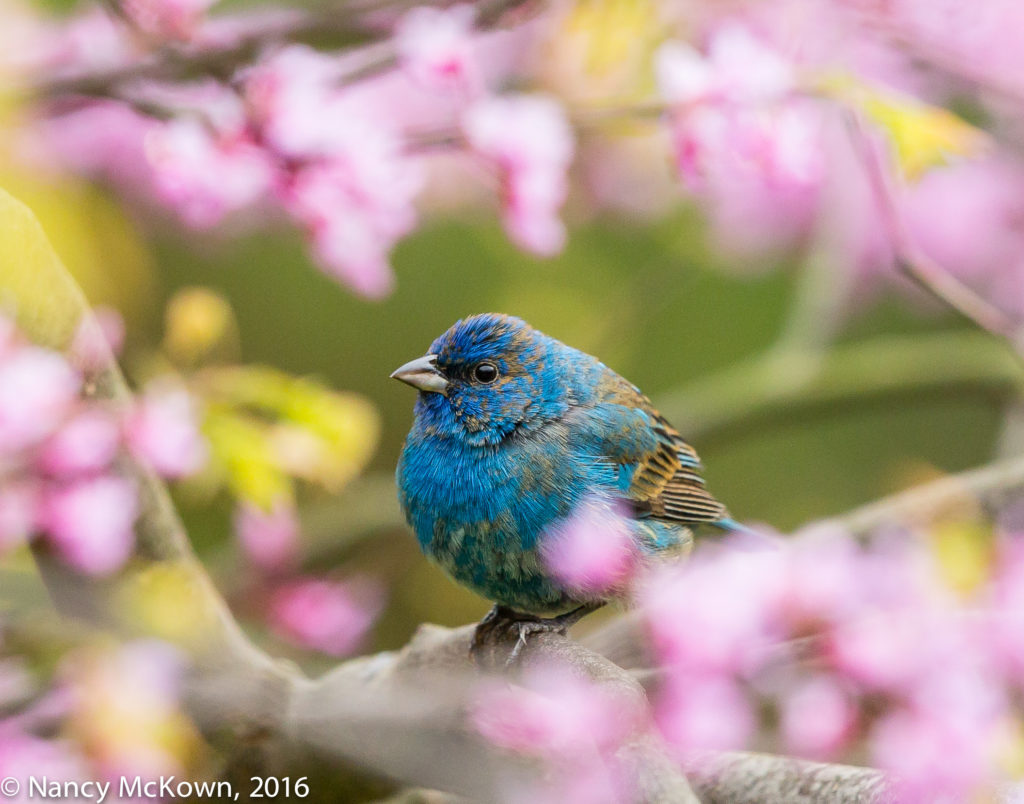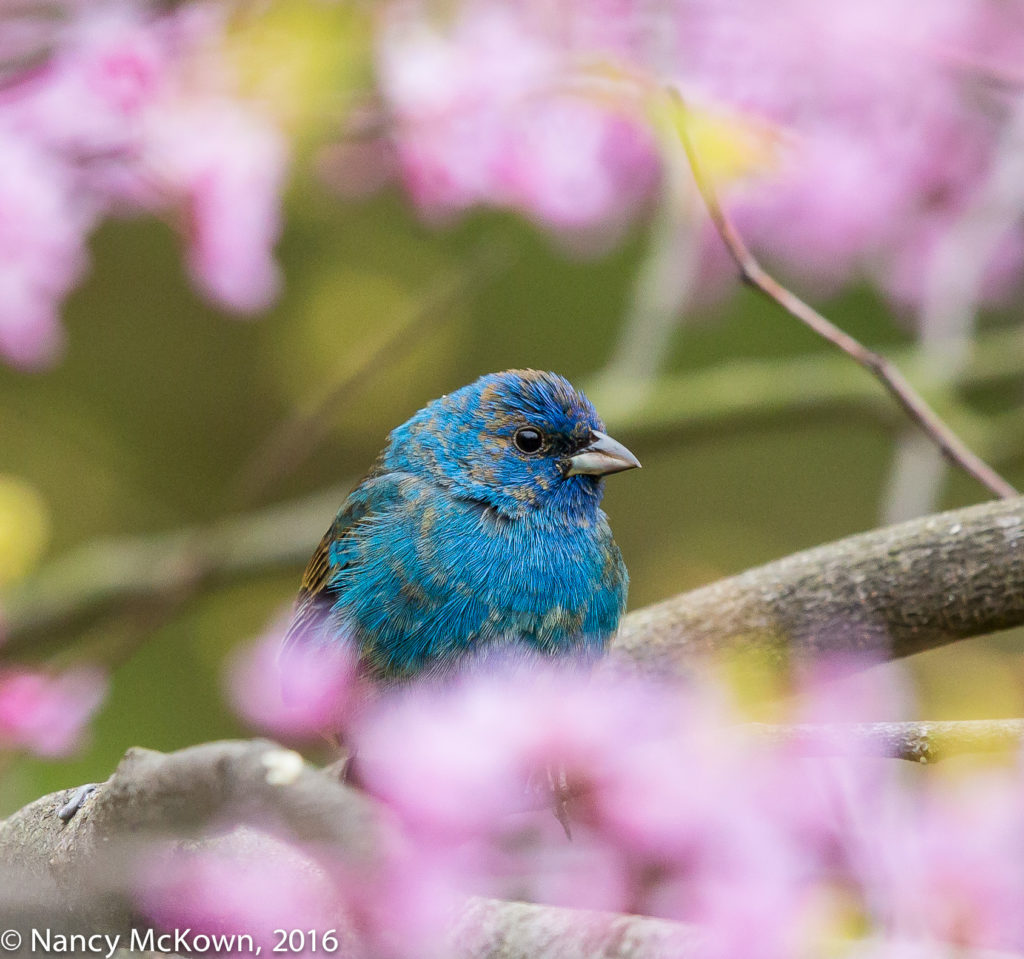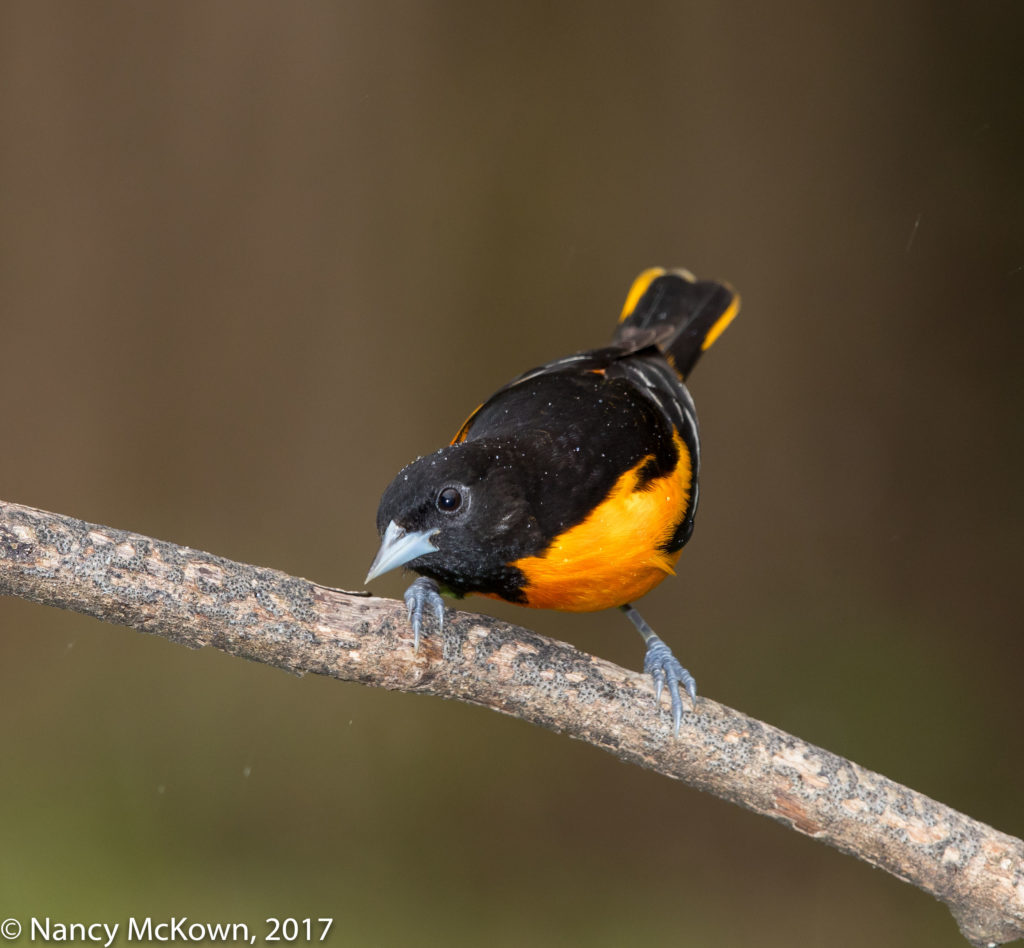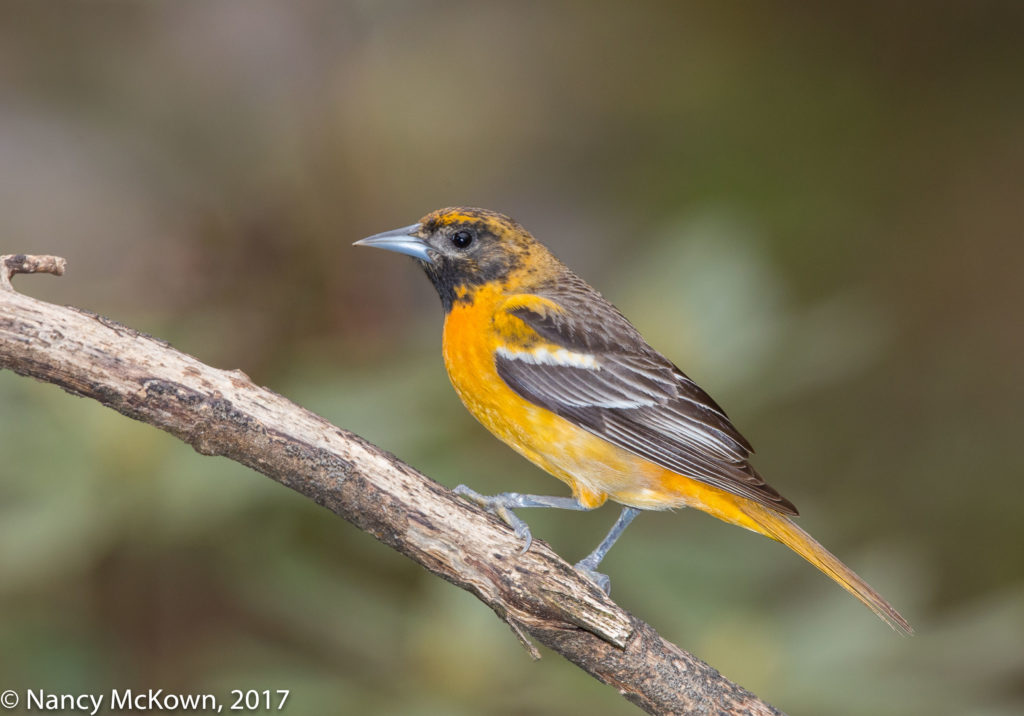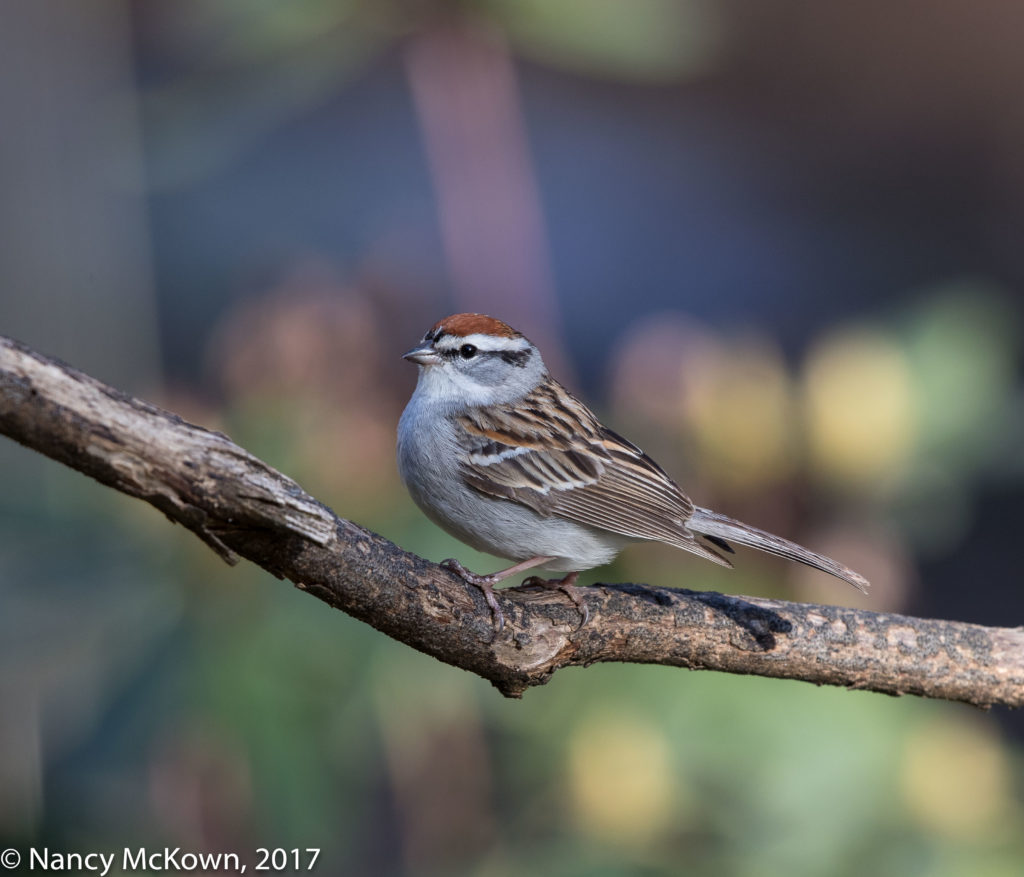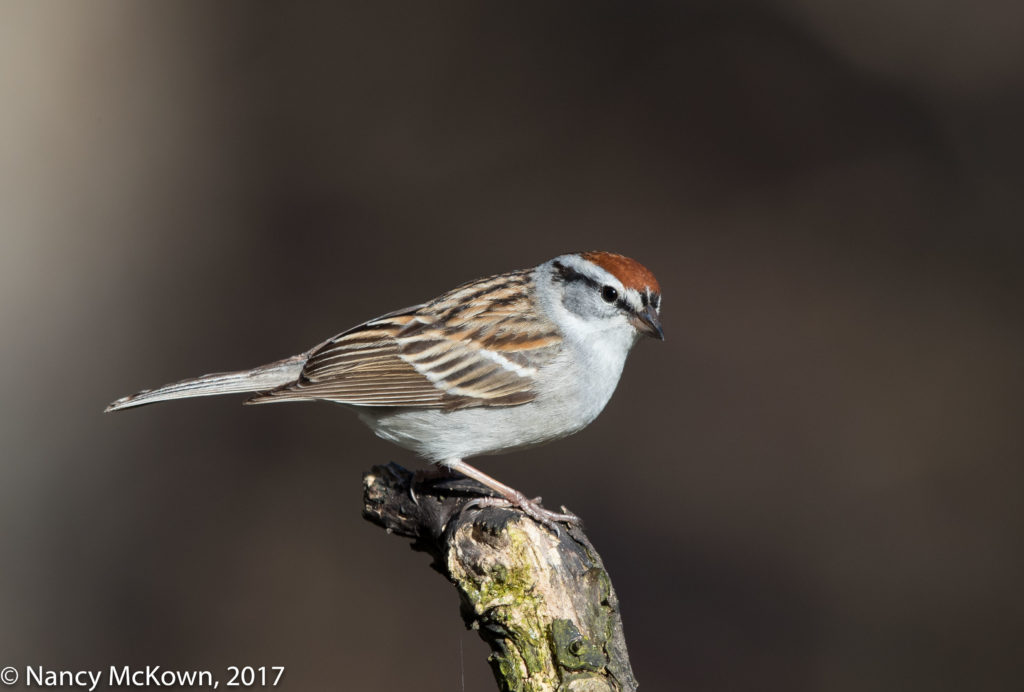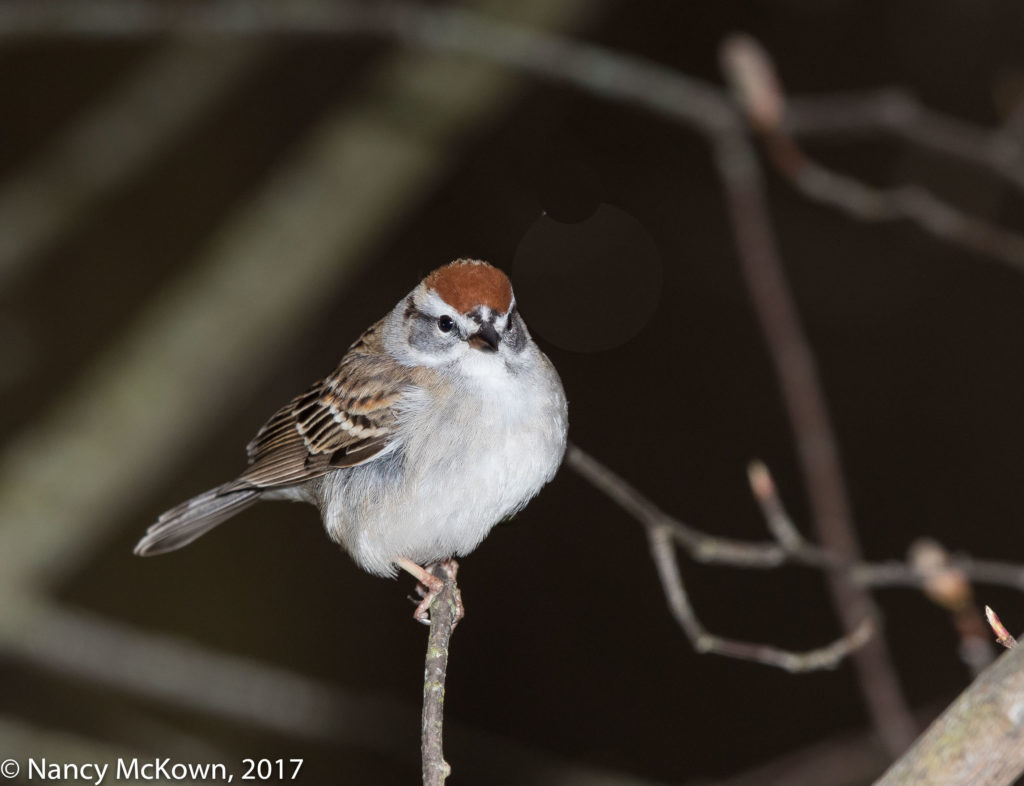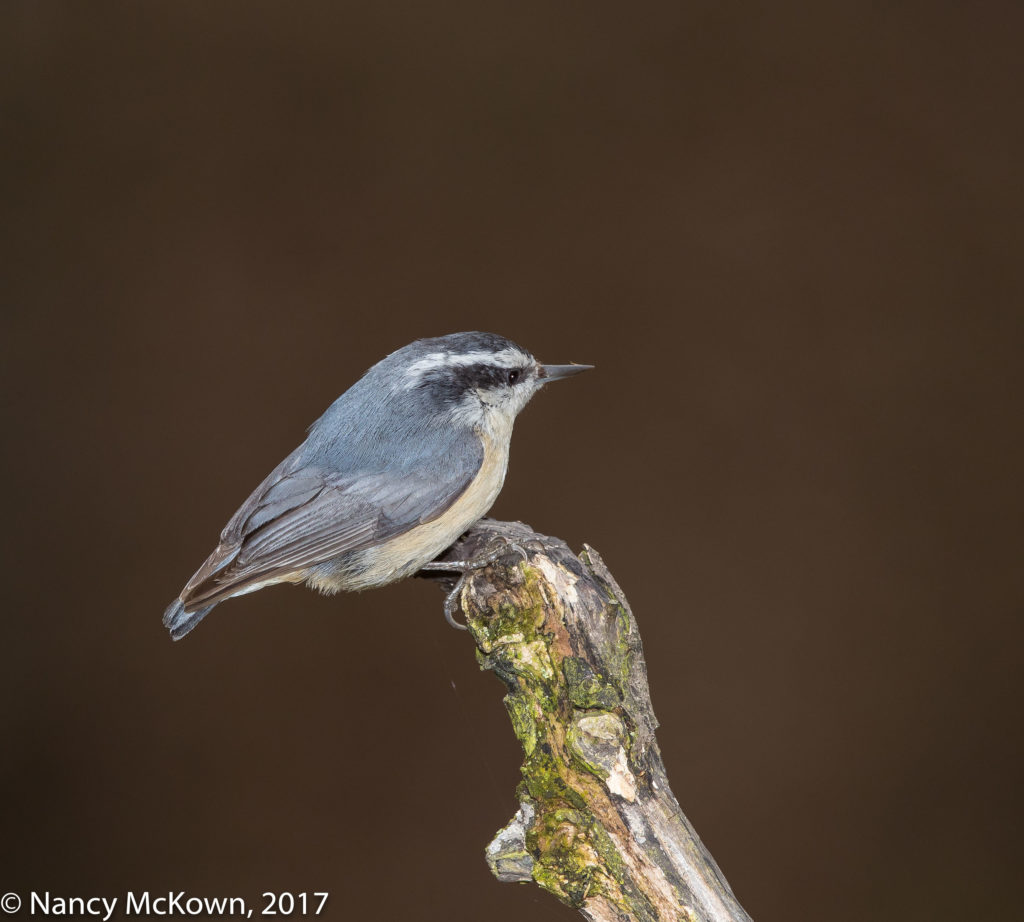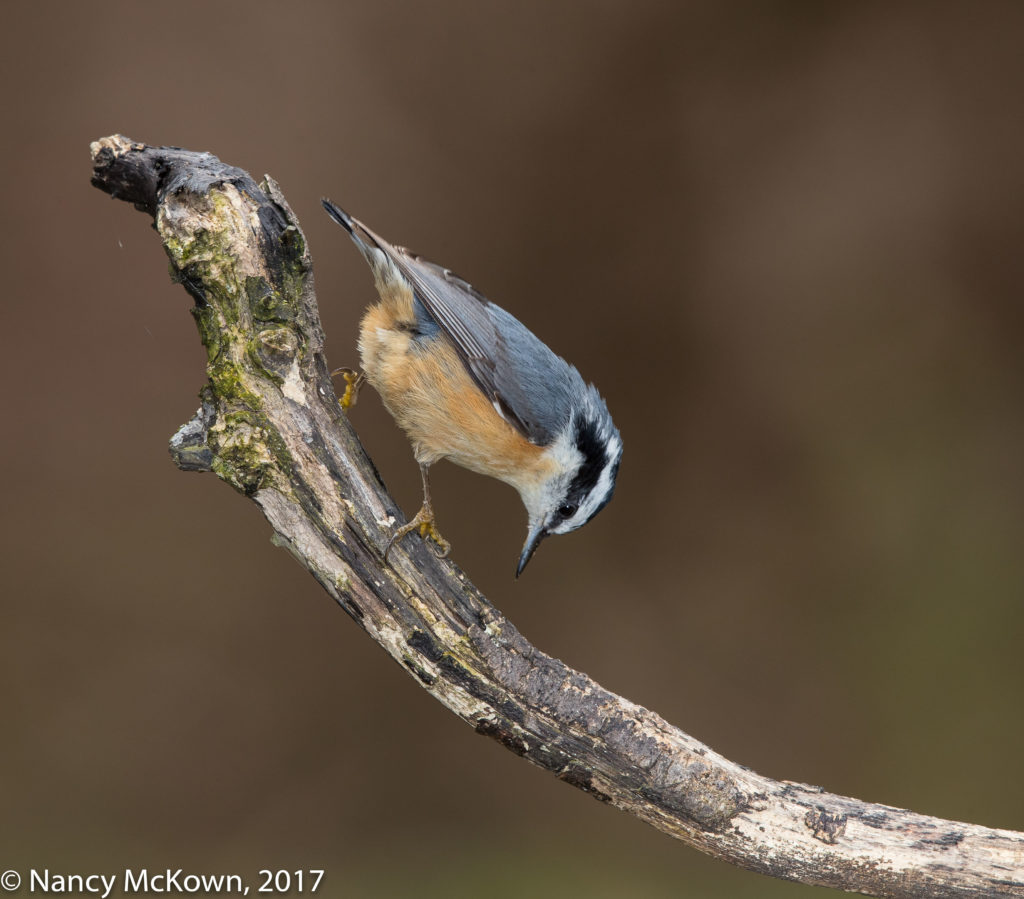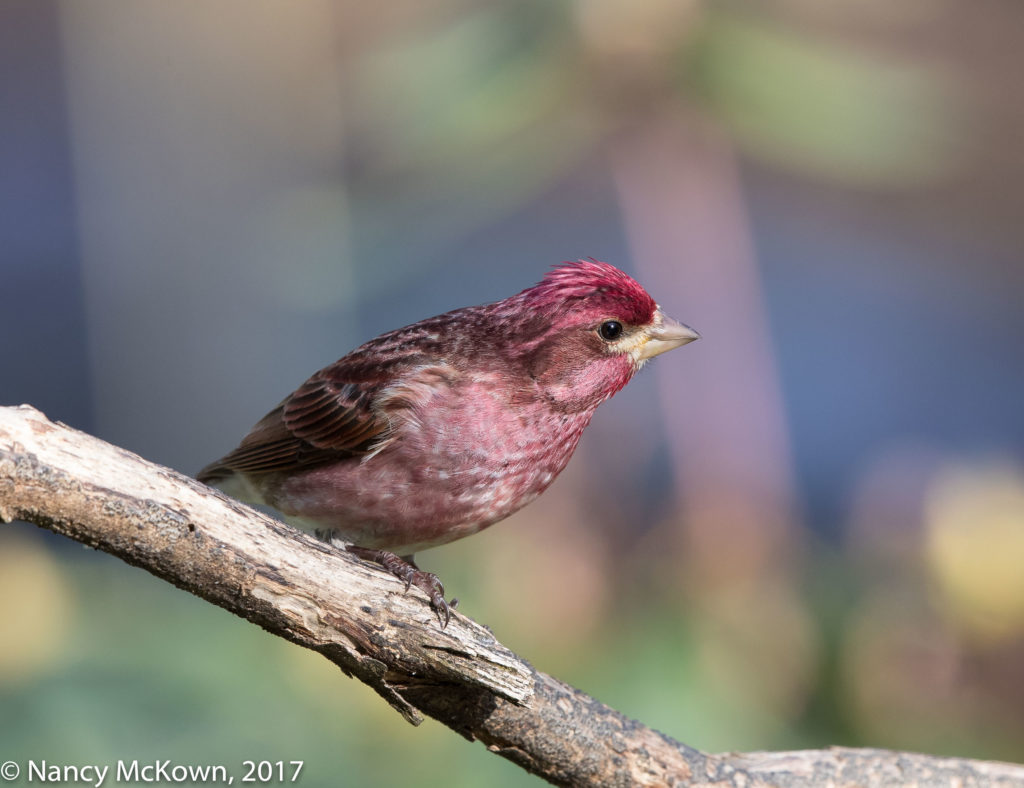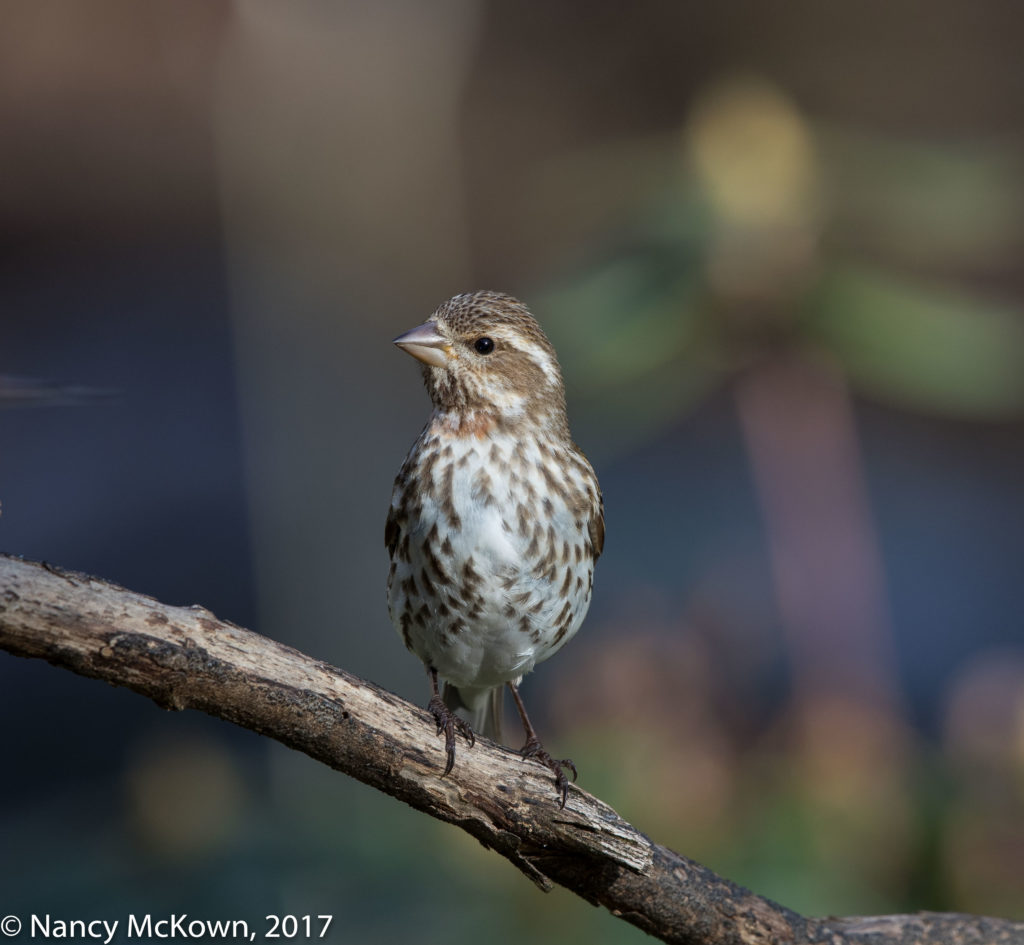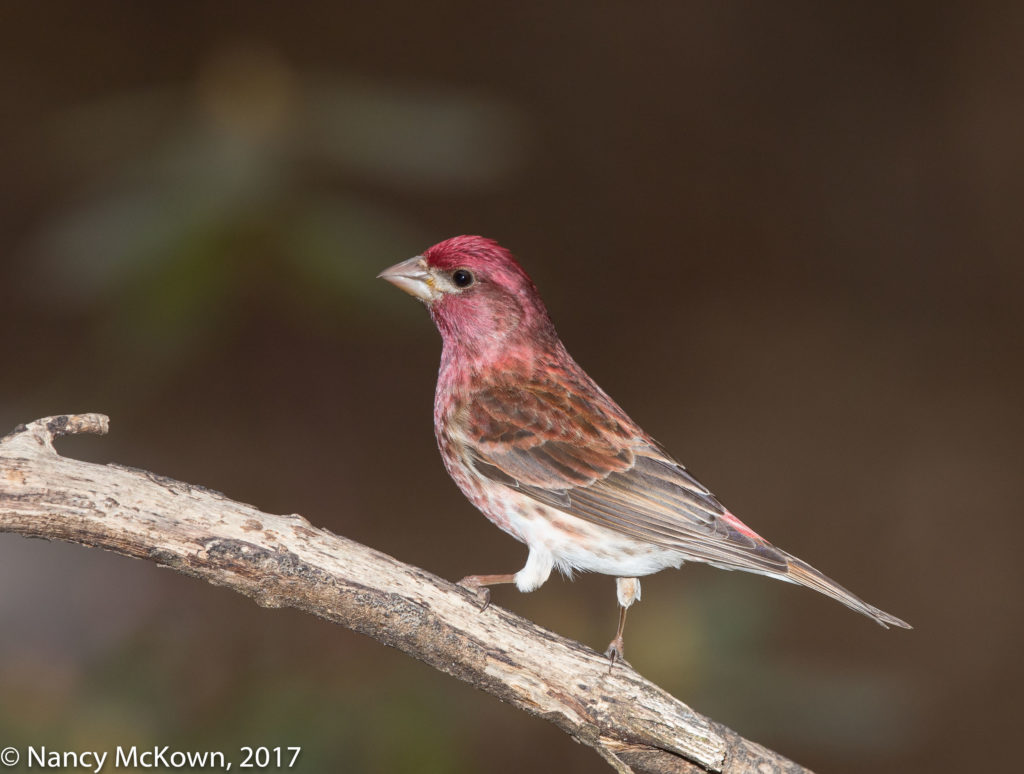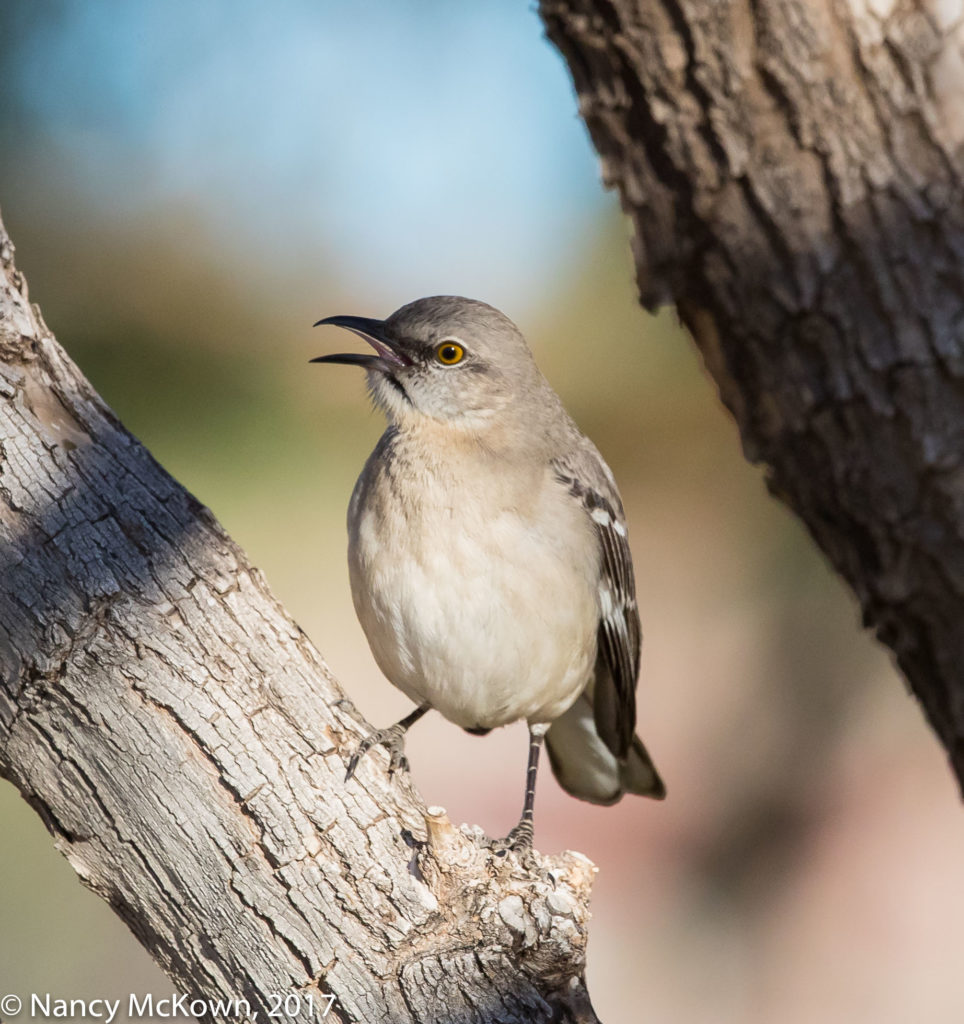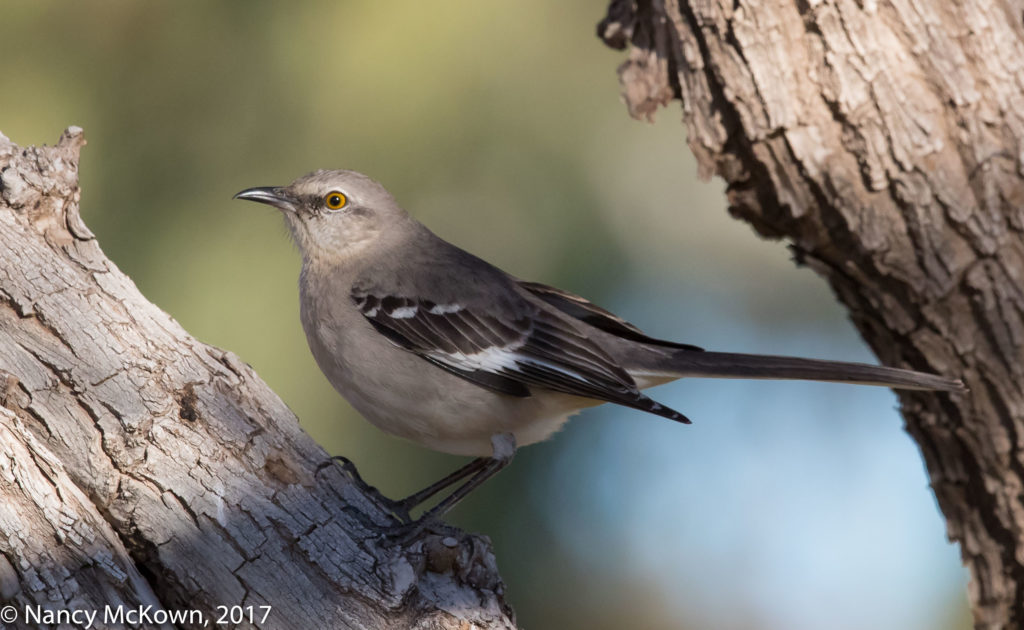Positioning The Camera
It’s a cold rainy summer morning….so dark I keep thinking I have my sunglasses on. I’ve cranked open the library windows and faced the camera toward the Serviceberry tree. My rig is positioned farther from the windows than usual because if it wasn’t, the 500mm lens would be too close to focus on the nearest berry branches. (NOTE: Minimum focusing distance = 12.4′ or 145.7″). The portable heater is resting on a book to insure that the floor under which it sits does not vibrate the camera. I positioned the lens to capture (as the bird’s background) a multilayered forest of feathery ferns huddling just beyond the Serviceberry tree. The f/9 aperture setting will transform a few of those individual fronds into lush, polished buttery green swirls.
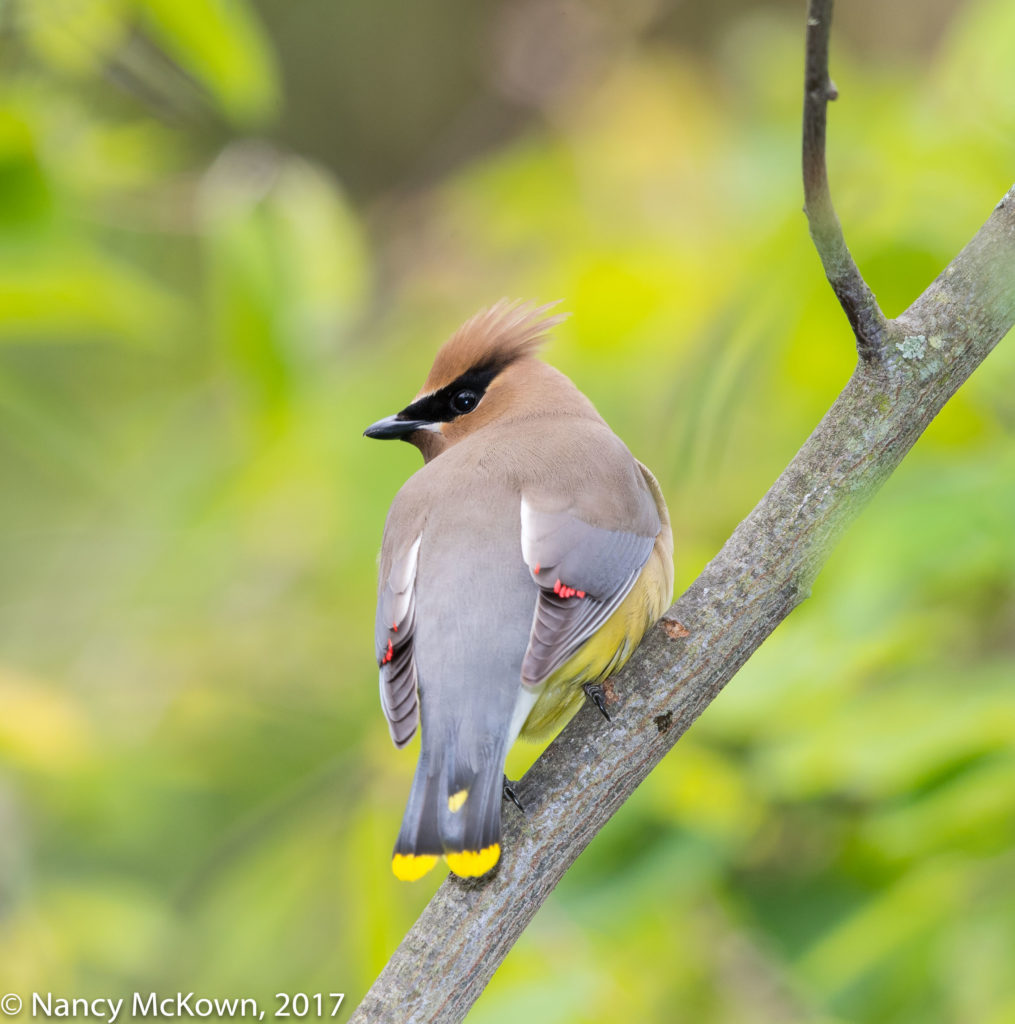
Silky Back Feathers with
Wing Feather Tips Dipped in Red
ISO400; f/9; 1/250 Second
Photographing Two Cedar Waxwings
Birds constantly forage, even in the wettest and coldest of conditions. The bolder, familiar frugivores in our yard (Jays, Catbirds, Robins, Titmice, Nuthatch, Woodpeckers, Finches, many of them tending to their fledglings) swarm the Serviceberry tree, acrobatically maneuvering to pluck the ripe berries at the ends of the branches.
I can see Cedar Waxwings in the distance. They are cautious, watching me, coming in a little closer and then doubling back for safer grounds. They are better at waiting and watching than I am- and I’m pretty good.
Cedar Waxwings are nomadic birds and thus do not establish territories. This species is highly social and travels in cooperative flocks – moving often from one place to another and settling down for a short time during breeding season to build nests and raise young. The only way I can reliably find and photograph these fruit eating birds is to look for trees and shrubs that bear small fruits- huckleberry, serviceberry, juniper, hawthorn, cedar, honeysuckle and winterberry. Assuming the fruit is ripe, there’s a good chance that Cedar Waxwings will be found voraciously eating the berries until the bushes are bare.

The Male Offers the Female a Green Berry.
ISO400; f/9; 1/250 Second
Flash Limitations
The cedar paths beyond the Serviceberry tree are obstructed with thick foliage, so much so that I no longer can see through the woods to the houses beyond. The only trees that aren’t completely fleshed out are the high in the sky Locust trees. The ostrich ferns have unfurled, no longer reaching. It’s very difficult to get a clear line of sight into the understory trees or through the woods beyond. It’s best to be patient, wait and hope that the birds will perch closer to the camera.
The woodlands in the background are darker than the foreground…almost 2 stops darker. I set the camera to spot metering so E-TTL II is better able to read the light and emit the appropriate amount of flash if the bird happens to be farther off. I have the Beam Concentrating Fresnel attached to concentrate the light beam so it can travel greater distances. (NOTE: This is an essential piece of equipment if you want a flash blast that better fits the angle of view of a long lens. However, a flash extender will not be able to project enough light to the smaller distant birds if they are perched more than 25 feet from the camera.)
Berry Eating Birds
If you want to attract and photograph birds into your yard, plant Serviceberry Trees. If that’s not possible, just search out the locations of the wild berry bushes around you and do a little research to determine when the berries will be ripe. You won’t be disappointed.









